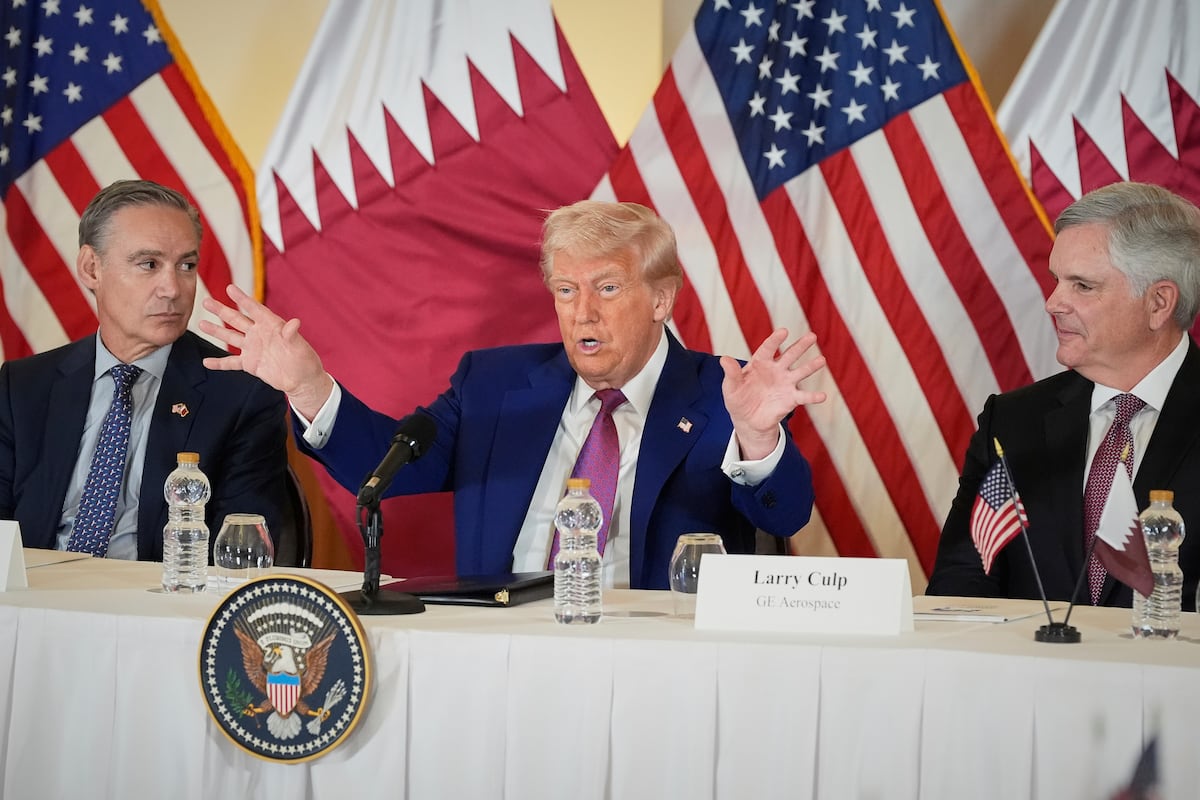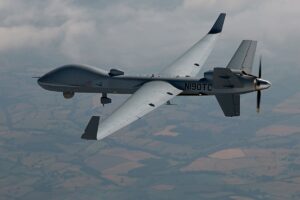Trump’s Aviation Remarks Stir Confusion, Leave Pentagon Silent
In a surprising turn during a discussion in Doha, Qatar, former President Donald Trump sparked confusion among military aviation experts with his comments about future U.S. fighter jets. His unexpected claims about an F-35 successor, which he named the F-55, have yet to be confirmed by the Pentagon, leaving industry leaders puzzled.
At the roundtable, accompanied by leaders from Boeing and GE Aerospace, Trump announced plans for a “substantial upgrade” to the F-35, which he referred to as the F-55. “The F-35, we’re doing an upgrade, a simple upgrade,” Trump noted. “But we’re also doing an F-55, I’m going to call it an F-55. And that’s going to be a substantial upgrade. But it’s going to be also with two engines.”
In addition to the F-55, Trump mentioned a modernized version of the F-22, which he called the “F-22 Super.” However, Frank Kendall, a former Air Force secretary, expressed uncertainty about Trump’s reference, speculating it might relate to the F-47 sixth-generation fighter jet.
The F-47, previously known as Next Generation Air Dominance (NGAD), is set to replace the current fleet of F-22 Raptors. Boeing was awarded the contract to develop the F-47 in March, emphasizing the Air Force’s commitment to advanced air dominance capabilities.
Despite Trump’s comments, no official details about the F-55 have been released, and the Air Force and Navy deflected inquiries to the White House, which has not yet clarified the situation. Lockheed Martin, responsible for manufacturing both the F-35 and F-22, did not directly address Trump’s statements but expressed gratitude for his support.
Kendall also expressed skepticism about the existence of the F-55, suggesting it might be speculative. Aviation expert Richard Aboulafia echoed this sentiment, likening Trump’s mention of the F-55 to something out of “Revell model kits from a couple decades ago.”
Trump criticized the F-35’s single-engine design, suggesting a dual-engine approach could enhance safety. He pointed out, “An F-35 has a single engine; I don’t like single engines,” highlighting the advantage of multiple engines in aircraft safety.
Kendall countered this by noting the reliability of single-engine aircraft in the Air Force’s fleet, including the F-16s and F-35As, which outnumber twin-engine jets like the F-22s and F-15s.
Enhancements to the F-35 program are in progress, with Lockheed Martin and Pratt & Whitney working on upgrades to boost the fighter’s capabilities. Lockheed Martin’s proposed Block 4 upgrades aim to enhance the F-35’s sensors, target recognition, and electronic warfare capabilities, with early implementations expected soon.
Trump’s remarks also touched on the evolving nature of stealth technology, questioning its long-term efficacy. He criticized the design aesthetics of stealth aircraft, suggesting they could become obsolete quickly. However, his views on stealth contrast with his previous admiration for the F-35’s stealth capabilities, famously stating in 2017, “You can’t see it. It’s hard to fight a plane you can’t see.”
The Air Force remains committed to stealth technology, underscoring its importance in future combat scenarios, particularly against adversaries like China. The B-21 Raider and F-47 are being developed with advanced stealth features, ensuring the U.S. maintains its edge in air combat capabilities.






